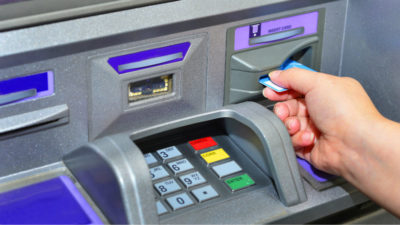It’s not only oil producers that are benefiting from the crisis in the Middle East and Iraq, but also gold miners, as gold is seen as a perennial refuge in times of crisis. Gold has spiked a healthy 4% since the crisis began, and this appreciation in its price has flowed across to gold miners. For example, the AMEX Gold Miners Index (^GDM) has spiked a healthy 7% over the last five days, reflecting the strong gains made by gold miners over recent days.
What is driving this demand for gold?
At this time, it’s the political and economic uncertainty created by the crisis in Iraq, as well as fears of runaway inflation generated by significantly higher crude prices.
However, there are other drivers operating to sustain higher gold prices. There was higher-than-expected demand for gold in the first quarter of 2014, which saw it remain relatively stable compared to the first quarter of 2013. This included growing demand for gold used in the manufacturing of jewelry, as well as central bank demand, despite investment demand declining a massive 39% year over year.
For this period, central bank demand remained relatively stable, down a mere 6% year over year, while demand for gold in the manufacture of jewelry rose a modest 3%. A key driver of jewelry demand has been lower gold prices, with the precious yellow metal perceived in countries such as China, Vietnam, Thailand, and India to be not only aesthetically pleasing but also a store of status and wealth.
However, the key question for investors is what the remainder of 2014 holds in store for gold. Some analysts have forecast a significant slump in its price to as low as $1,050 per ounce. There is also the question of whether the crisis in Iraq will drive gold prices higher.
How does the crisis in Iraq affect the price of gold?
Higher crude prices driven by growing concerns over the crisis in Iraq are now seeing both West Texas Intermediate and Brent trading at well over $100 per barrel. This has created fear regarding inflation, particularly with some analysts now forecasting that crude prices could go as high as between $122 and $140 per barrel.
Such a rapid appreciation in the price of crude will not only increase inflation but lead to lower rates of economic growth as the cost of economic and business activity increases. Any decline in economic growth coupled with higher inflation makes gold an attractive investment, and would certainly push gold prices higher as investors seek a safe haven and an inflationary hedge.
How can investors benefit from the increase in gold prices?
There are a range of ways in which investors can boost their exposure to gold, such as physically buying the asset, investing in gold ETFs, and investing in gold miners. As a contrarian value investor, my preferred method would be to seek out undervalued gold miners, as this sector has fallen heavily out of favour with investors.
Three of my preferred investments would be Barrick Gold (TSX: ABX)(NYSE: ABX), Goldcorp (TSX: G)(NYSE: GG), and Kinross Gold (TSX:K)(NYSE:KGC). All three have appealing valuation ratios and a significant scale of operations, allowing them to boost production as the gold price appreciates.
Barrick has an enterprise value of a mere five times EBITDA, while Kinross’s is seven times EBITDA and Goldcorp’s is nine times EBITDA. All three also have a relatively low EV per ounce of gold reserves, with Barrick’s at $281 per ounce, Goldcorp’s at $378, and Kinross’s at a mere $189. This indicates to me that the market has yet to fully appreciate the value of their gold reserves.
Investors looking to place a bet on a recovery in gold prices due to the conflict in Iraq and growing jewelry and central bank demand would be smart to consider these three miners.







